The Golden Compasses
(1969-1972)–Leon Voet–The History of the House of Plantin-Moretus
[pagina 238]
| |
Chapter 7
| |
[pagina 239]
| |
of this routine work was delegated to subordinates. However, when circumstances demanded it, these later masters of the Gulden Passer still came forward to lead the struggle against the forces that beset their house,Ga naar voetnoot1. or to assure the quality of its products.Ga naar voetnoot2. | |
The later prosperityAnna Maria de Neuf (1696-1714), Balthasar IV (1707-30), Joannes Jacobus (1716-57)Ga naar voetnoot3. - In books about the Moretus family it is usually made to appear as if it was the seventeen-year-old Balthasar IV, Balthasar III's eldest son, who took over the management of the officina on the death of his father in 1696, and that when Balthasar IV died in 1730 he was succeeded by his younger brother Joannes Jacobus. This, however, is something of an over-simplification. At the death of Balthasar III the business was carried on by his widow Anna Maria de Neuf, who ruled it with a firm hand right up to her death in 1714. Until 1707 books printed by the Plantin press carried the address ‘Ex Typographia Plantiniana apud Viduam Balthasaris Moreti’. In 1707 this was simplified to the terse ‘Ex Typographia Plantiniana’. Balthasar III's widow was still nominally in charge (and probably it was she who made the most important decisions: she gives the impression of having been a very resolute kind of woman), but she had taken her eldest son Balthasar IV into partnership. On 13th May 1707 he was given a half share in the press and the bookshop, although on rather drastic conditions (an initial payment of 40,000 fl. | |
[pagina 240]
| |
in cash, and the acceptance of bonds to the value of 106,148 fl. 18½ st., on which 3 per cent interest had to be paid). This left Balthasar practically without ready money and repeatedly obliged him to approach his mother for loans in the following years. These conditions should not be taken as evidence of family friction. Some of the children were still under age, and it was for the sake of being fair to these and safeguarding the rights of Balthasar's other brothers and sisters that this financial curb was applied. Anna Maria's death in 1714 on the other hand did not make Balthasar the sole owner and sole recipient of the profits of the Gulden Passer. He retained his half share in the firm and became its director, but the other half share had to ‘continue to the general profit of her estate until her youngest son, jonker Joannes Jacobus, shall have achieved his majority, when he shall be able to enter into possession of half of the said Plantin Press’. Joannes Jacobus was then already twenty-four years old, and a lawyer of the Brabantine court, but according to the customary laws of Antwerp, an unmarried child did not come of age until twenty-five. Joannes Jacobus attained that age in June 1715, and on 1st January 1716 the two brothers began to profit jointly from the Officina Plantiniana. Of the eight children Isabella Jacoba de Mont (or de Brialmont) bore her husband Balthasar IV, five died in infancy. Only two sons, Balthasar V and Simon Franciscus, survived. In the provisions of his will of 1725, Balthasar IV left his share in the Plantin press to his son Balthasar. In the event of the latter declining to accept the inheritance or dying prematurely, Simon Franciscus would become the beneficiary.Ga naar voetnoot1. However, neither brother felt inclined to shoulder the burden of the family business, preferring to live quietly on the interest from their capital. Some months after their father's death Balthasar V, acting on his own and his brother's behalf, made over their inherited share in the press by a deed of 30th August 1730 to their uncle Joannes Jacobus, who thus became sole owner of the Officina Plantiniana.Ga naar voetnoot2. Balthasar IV Moretus was the last master of the Gulden Passer to have been trained as a printer and bookseller. After receiving an elementary education at Lier, he was sent in 1695 as a youth of sixteen to Lille where he was | |
[pagina *57]
| |
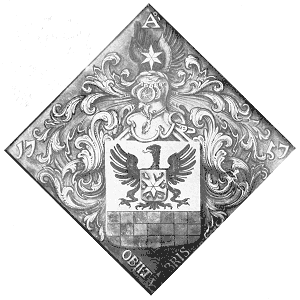 (56) Coat-of-arms of the Moretus family. Oil painting on panel by an anonymous master. The painting was made for the funeral of Joannes Jacobus Moretus (5th September 1757). The coat-of-arms shows an eagle on a chequered field, derived from the arms of the Gras (or Grassis) family to which Jan I's mother belonged. On the eagle's breast is a small shield with a gold star, Balthasar I's personal symbol. (Cf. also p. 235.) The flames around this star are the painter's own embellishment: normally the Moretus blazon lacks them.
| |
[pagina *58]
| |
 (57) Balthasar II Moretus (1615-74). Oil painting on panel by Jacob van Reesbroeck, commissioned by the sitter himself in 1659.
| |
[pagina *59]
| |
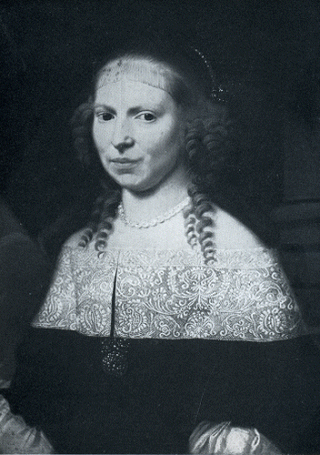 (58) Anna Goos (1627-91), Balthasar II Moretus's wife. Oil painting on panel by Jacob van Reesbroeck. Commissioned by Balthasar II as a companion piece to his own portrait in 1659.
| |
[pagina *60]
| |
 (59) Anna Maria de Neuf (1654-1714), Balthasar III Moretus's wife. Oil painting on canvas by an anonymous master.
| |
[pagina *61]
| |
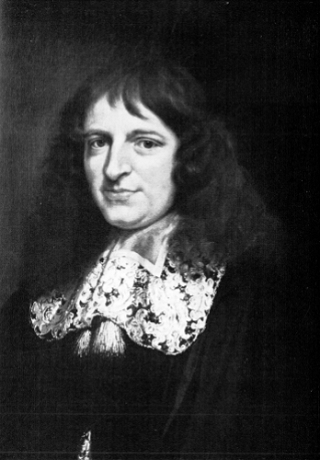 (60) Balthasar III Moretus (1646-96). Oil painting on canvas by an anonymous master.
| |
[pagina *62]
| |
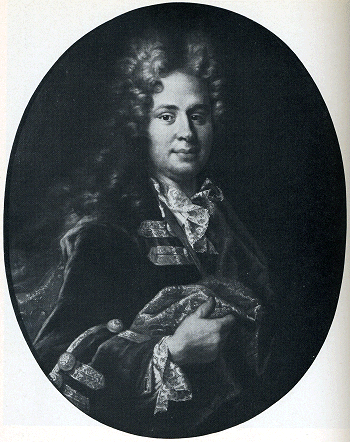 (61) Balthasar IV Moretus (1679-1730). Oil painting on canvas by an anonymous master.
| |
[pagina *63]
| |
 (62) Isabella Jacoba de Mont (or de Brialmont) (1682-1723), Balthasar IV Moretus's wife. Oil painting on canvas by an anonymous master.
| |
[pagina *64]
| |
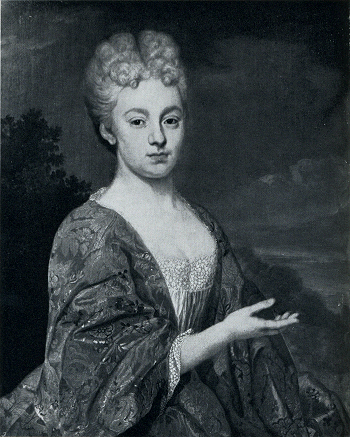 (63) Theresia Mathilda Schilder (1696-1729), Joannes Jacobus Moretus's wife. Oil painting on canvas by Jan van Helmont, commissioned by Joannes Jacobus in 1717 as a companion piece to his own portrait.
| |
[pagina *65]
| |
 (64) Joannes Jacobus Moretus (1690-1757). Oil painting on canvas by Jan van Helmont, commissioned by the sitter in 1717.
| |
[pagina *66]
| |
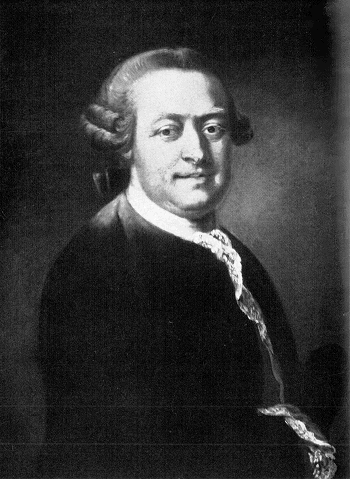 (65) Franciscus Joannes Moretus (1717-68). Oil painting on canvas by Filips Jozef Tassaert, commissioned by the sitter in 1762.
| |
[pagina *67]
| |
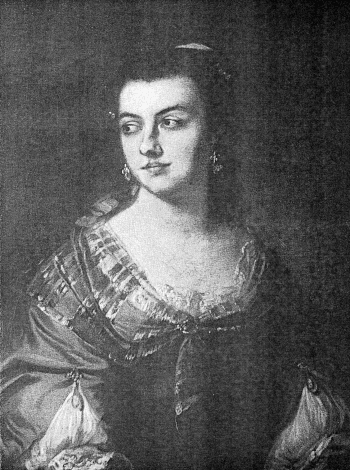 (66) Maria Theresia Josephina Borrekens (1728-97), Franciscus Joannes Moretus's wife. Oil painting on canvas by Filips Jozef Tassaert, commissioned in 1762 by Franciscus Joannes as a companion piece to his own portrait.
| |
[pagina *68]
| |
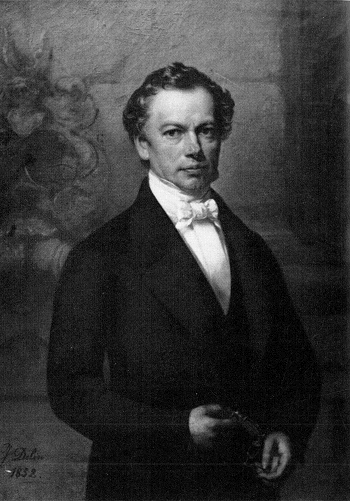 (67) Edward Jozef Hyacinth Moretus (1804-80). Oil painting on canvas by Jozef Delin, dated 1852. Presented to the Plantin-Moretus Museum by A. de Granges de Surgères in 1953.
| |
[pagina 241]
| |
‘to learn the pure French language and to be taught other useful and worthy accomplishments’ at the house of the printer and bookseller François Fievet.Ga naar voetnoot1. His younger brother Joannes Jacobus was the first master of the Gulden Passer to go to university. He studied at Douai and Louvain and on 19th June 1711 obtained from the latter university his licence to practise both civil and criminal law. On 1st March 1713 he was sworn in as an advocate of the Brabantine court.Ga naar voetnoot2. Like their father before them, both brothers were considerably involved in the life of their city. Balthasar IV was chief almoner from 1708 to 1711 and in this capacity had an active share in the establishment of the new theatre in the Tapissierspand.Ga naar voetnoot3. The theatres in Antwerp, as in many other cities, put on performances in aid of the poor, so that their organization was one of the official duties of the almoners. As well as being an almoner in 1717, Joannes Jacobus held the office of alderman of Antwerp from 1727 to 1729. The two brothers were not only numbered among Antwerp's leading burghers, but were also considered the wealthiest citizens of both town and province. Balthasar III had managed greatly to increase the fortune he had inherited from his father, and Anna Maria de Neuf, quite apart from belonging to a very well-to-do family herself, had proved to be possessed of as shrewd a head for business as her husband. Her estate in 1714 totalled 760,000 fl., an immense fortune for that time.Ga naar voetnoot4. | |
[pagina 242]
| |
A large part of this was made up of real estate, rents, bills of exchange, and bonds. Whereas half a century before virtually the whole of Balthasar II's fortune had been put into the business, his son and daughter-in-law had become investors, able to live comfortably as rentiers and less dependent on the vicissitudes of the printing and publishing business. This tendency to invest their money in ‘gilt-edged’ stocks has for centuries been a normal phenomenon among entrepreneurs who have made their fortunes. It was especially characteristic of the seventeenth and eighteenth centuries and led to the rise of wealthy rentier families who, whether or not they entered the nobility, either disported themselves in idleness or, being free from the struggle to earn a living, sought a social or political function as great landowners or magistrates. This mentality spread to the Moretuses; the action of Balthasar IV's sons is evidence of this. But the amazing thing about the Moretus family is that even after its continuing prosperity was assured, in each generation there were still characters who wanted to carry on the printing tradition and were willing to face all the toil and worry that this entailed. These stalwarts sometimes even ventured into entirely new fields of activity, as will be seen from the career of Joannes Jacobus. What Balthasar IV left his children cannot be ascertained for lack of data. We know more about his brother Joannes Jacobus. The division of the estate in 1714 gave him a fortune of over 180,000 fl. (132,958 fl. as his inheritance and an endowment of 50,000 fl.). His wife, Theresia Mechtildis Schilder, whom he married in April 1716, brought a dowry of 50,000 fl. By 1739 Joannes Jacobus had almost trebled this amount (609,170 fl.). At his death in 1755 he left his beneficiaries nearly two million guilders (1,990, 338 fl.), a phenomenal amount for those days. Expressed in modern terms, Jonker Joannes Jacobus Moretus, advocate and publishing printer, was a multi-millionaire, one of the richest men in the Southern Netherlands, if not the wealthiest of them all. This immense fortune was only partly derived from the printing and publishing business. It had even less to do with jurisprudence. Jonker Joannes Jacobus was first and foremost a shrewd financier, who had shares and interests in numerous enterprises at home and abroad, and he did a flourishing trade in other luxury goods besides books. Among other things he dealt in great quantities of ‘Spanish lace’ (i.e. Flemish lace intended | |
[pagina 243]
| |
for the Spanish market).Ga naar voetnoot1. With other Antwerp capitalists he had a very active share in the formation of the famous ‘Ostend Company’ and was later one of the promoters of the ‘Trieste and Fiume Company’. Launched with difficulty, and none too remunerative at first, the latter was mainly concerned with sugar refineries.Ga naar voetnoot2. However, this does not mean that in the life and fortune of the Moretus family and of Joannes Jacobus the Plantin press was completely finished with. Production was at that time fully concentrated on liturgical publications; not a single other work left their presses after 1705 (when the Moretuses gave up the old privilege obtained by Plantin of printing the ordinances of the town of Antwerp). But these liturgical publications were still being produced on an industrial scale in the first half of the eighteenth century. The number of presses kept in operation over the course of the years often fluctuated, although within narrow limits: a minimum of eight, a maximum of eleven presses, of which the maximum was achieved more often than the minimum. The great European conflicts caused serious disturbances sometimes. The War of the Spanish Succession (1700-15) seems at first sight to have upset the activity of the Plantin press very little. The number of operative presses remained on the high side, but these presses worked for fewer hours. Anna Maria de Neuf, rather than dismissing a number of employees, elected to keep all the presses going at a diminished tempo - and for the employees naturally at decreased wages.Ga naar voetnoot3. During the War of the Austrian Succession (1740-48) Joannes Jacobus apparently did not follow this policy of choosing the lesser evil: the nine presses operative in 1740-1743 suddenly dropped to four in 1744 and right down to two in 1747. But once peace returned these crises were quickly overcome and the normal tempo was resumed. As in the preceding century it was the production of liturgical books for the Hieronymite Fathers of San Lorenzo that kept most of the presses in | |
[pagina 244]
| |
action. For the years 1716 to 1730 alone, the period of the partnership of Balthasar IV and Joannes Jacobus, the Madrid and Seville administraciones of the fathers had to pay the Moretus firm 4,269,000 and 772,539 silver reales respectively, a total of 5,041,539 silver reales, equal to 1,097,040 fl. These were colossal transactions for that time, and more so for the Southern Netherlands where economic life was still stagnating: the missals and breviaries of the Moretuses were among the principal ‘finished’ export articles that left the Austrian Netherlands in this period. This export did not remain limited to Spain. Large consignments of bales and crates of liturgical works were sent also to Portugal, Germany, Austria, France, England, and the United Provinces, while in all the towns of the Austrian Netherlands Moretus's products were retailed by the local booksellers. In the first half of the eighteenth century the Officina Plantiniana experienced a boom, and it remained, as far as the quantity of works brought on to the market was concerned, one of the world's most important printing firms, perhaps even the most important. However, even towards the end of the life of Joannes Jacobus a certain malaise began to be apparent, which under his successor was to develop into a catastrophic decline. What the lengthy European wars had not been able to bring about was in the end caused by a quite simple alteration in the structure of the firm's trade. | |
The collapseFranciscus Joannes Moretus (1757-68) and Maria Theresia Borrekens (1768-97)Ga naar voetnoot1. - When the estate of Joannes Jacobus was divided up, the Gulden Passer was assigned to his eldest son, Franciscus Joannes (by a deed of 11th October 1758). Like his father, the young Franciscus Joannes had studied philosophy at Douai and obtained his license to practise law from Louvain University in 1742. Like his father and so many others of his family he was for a time chief almoner of Antwerp | |
[pagina 245]
| |
(1751). He also followed his father into the realms of high finance: he belonged among other things to the five deputies who had to look after the interests of the South Netherlands group of shareholders in the Trieste and Fiume Company. And, like his father, he took his duties as master of the Plantin press very much to heart. In order to ensure the high standard of his book illustration, which he considered necessary for the reputation of the officina, Joannes Jacobus had already been on the lookout abroad for able artists, and among others made contact with the famous French wood-engraver Papillon. Franciscus Joannes again followed his father in this and attempted to find in the French capital the accomplished wood- and copper-engravers who were no longer obtainable in Antwerp and the Southern Netherlands. This quest brought him little joy. The temperamental and demanding French artists often infuriated him. But it is precisely the obstinacy with which he sustained the unequal struggle and pressed his friends and business contacts in Paris to get the French artists to work, that shows clearly enough how seriously he took the Plantin press.Ga naar voetnoot1. This Moretus too put heart and soul into the family firm, and yet it was under him that the thread suddenly snapped and the thriving Officina Plantiniana declined into a vegetating, third-class concern. The start of the decline can be dated quite precisely to July 1765, but the symptoms were already noticeable in the last years of Joannes Jacobus. The War of the Austrian Succession had brought about a crisis which was only warded off in 1750. But whereas formerly, after similar troubles, the number of presses in operation had quickly been restored to eleven, from 1751 to 1758 Joannes Jacobus was only able to keep eight presses going. Under his son two presses fell permanently out of use in the latter half of 1758. From 1759 to 1765 the number continued to oscillate around six, until in July 1765 it fell abruptly to three and the staff was reduced from twenty-seven to seventeen men.Ga naar voetnoot2. This time there was no subsequent revival. The Plantin press was permanently on the decline. What had happened? It was in these years that the cornerstone of | |
[pagina 246]
| |
Plantinian trade was removed, namely the printing of Catholic service-books for Spain. The new Bourbon dynasty which was established in the eighteenth century in Spain tried to shake the country awake, and was partly successful in this. Spanish home industries were encouraged and the monopolies and privileges of foreigners were curtailed or abolished.Ga naar voetnoot1. In 1731, by royal decree, the printing of liturgical works in Spain, by Spaniards, was encouraged. This decree was the outcome of a campaign by the printer Antonio Bordazar, who in the following year published a detailed and reasoned manifesto, setting out, as the royal decree requested, ways and means of establishing Spanish presses for printing liturgical works. This Plantificacion de la Imprenta de el Rezo Sagrado, que su Magestad (Dios le guarde) se ha servido mandar que se establezca en España was a direct attack on the Moretus monopoly. The manifesto aroused a certain amount of commotion but had no immediate consequences. After the death of Bordazar, one of his fellow printers, José de Orga, took up the cause. In 1748 he asked Ferdinand IV for permission to set up a ‘liturgical press’ for the service and greater glory of the Spanish nation. The Moretuses were the particular subject of attack. What they and printers in Venice and Holland had produced and were still producing could be turned out just as well, and more cheaply, in Spain itself, and without valuable currency being drained from the country. These were just preliminary skirmishes. Spain still had no type-foundries or presses that were sufficiently well-equipped to set up and print the rezo romano, or the rezo sagrado, as Bordazar and Orga preferred to call it. Printing in the Iberian peninsula, however, blossomed rapidly, producing such figures as Joaquin Ibarra, one of the internationally renowned typographers of his day. Even without a specialized press, the new generation of printers could cope with the rezo sagrado. Consequently, in a decree dated Aranjuez, 3rd June 1764, Charles III cancelled with one stroke of his pen all privileges of foreign typographers in Spain, and confirmed at the same time the agreement signed shortly before, on 15th April 1764, by the Hieronymites and a new ‘Compania de Impresores y Libreros de Madrid’ for the printing of liturgical works.Ga naar voetnoot2. The Moretuses themselves, in a memorandum dating | |
[pagina 247]
| |
from the opening years of the nineteenth century, attributed the loss of their Spanish privileges to the establishment of an ‘imprimerie royale’ in Madrid ‘25 to 30 years ago’. As a result of this the Spanish king had not only put an end to their privileges but even forbade them to dispose of their remaining stocks of books in the Peninsula.Ga naar voetnoot1. There was no royal press as such in eighteenth-century Spain, but around the middle of the century several ‘printers to the King’, such as Ibarra, began to be very active. Very probably, however, the establishment of the ‘Compania de Impresores y Libreros de Madrid’ is meant by the memorandum. This document also reveals that the masters of the Gulden Passer tried, through the prefect d'Herbouville (1799-1805), to prevail upon the Spanish consul in Amsterdam to put their case to Madrid with a view to obtaining permission for them to export their remaining stock of liturgical books to Spain. The answer was a curt no - the prices quoted were reasonable, but the consul did not dare to bring the matter to the attention of his sovereign. Specializing as it did in a narrow branch of typography, and in the sale of this specialized product, the loss of the Spanish privileges was a disastrous setback for the Plantin press. However, the Moretus breviaries, missals, and books of hours had always found purchasers outside the Spanish peninsula, both in the Southern Netherlands and neighbouring countries. This market was more difficult to operate because competition there was hard and keen. But Franciscus Joannes Moretus decided not to give up: the Plantin press would go on producing its service books, even though for a reduced market and at a very much reduced rate. Franciscus Joannes Moretus died in 1768, at the age of fifty-one, leaving a young widow with six children under age and expecting a seventh. Those who thought that dealing with the Plantin press would henceforth be a softer option were soon disappointed: Maria Theresia Borrekens was of tough fibre.Ga naar voetnoot2. One of those who discovered this was the Parisian engraver Hendelot who, hearing of the death of Franciscus Joannes, suddenly raised his prices and sent in falsified bills. From the bed where she had given | |
[pagina 248]
| |
birth to a daughter, the widow riposted so sharply and effectively that the artist backed down immediately. Scarcely ten days after her husband's death, Maria Theresia took the business into her own hands, and did not relinquish it until she died twenty-nine years later. She devoted herself with energy to the task which she had set herself: ‘the Plantin press... to bequeath it with added lustre to my children’ (letter dated 10th August 1768).Ga naar voetnoot1. But energy and devotion were not enough. Circumstances showed themselves to be stronger. It grew steadily quieter in the Plantin press. In 1775 there were only ten men employed. In 1783 the staff was reduced to four men. In the years 1788 to 1791, two employees were considered sufficient to keep the officina going. In the following years the number went up to five, but this slight revival did not signify a great deal.Ga naar voetnoot2. In the first half of the eighteenth century publications were still leaving the Plantin press at a brisk rate of five to ten a year, but now the tempo grew more sluggish. From 1775 onwards a year or more would elapse before a new edition was put on the market. The attempts to remedy the lack of indigenous engravers by calling on foreign artists were stopped. The firm's own stocks of copperplates dating back to earlier days of splendour were brought out and reprinted time and time again. The Plantin press slumbered on. The shock of the French Revolution and the upheavals of the Napoleonic period were not to rouse it from this lethargy, nor yet to inflict the final blow. | |
The French interlude (1794-1814)Ga naar voetnoot3.On 26th June 1794 the Austrian troops suffered defeat at Fleurus. Panic spread through the Austrian Netherlands. The clergy, aristocracy and upper middle classes fled to Holland and Germany. On the 11th July 1794 the sans-culottes were in Brussels. The abandonment of the Rupel-Nete line by Austria's British allies left Antwerp exposed. On the 21st July the exodus began. Five days later the French vanguard marched in. | |
[pagina 249]
| |
In his Geslagt-lyste,Ga naar voetnoot1. Van der Straelen indicates that the Moretus family too left the town and went abroad. Rooses, Sabbe, and others have accepted this view. As the officina was apparently never completely shut down, it has been suggested that an agent looked after the concern and the family interests.Ga naar voetnoot2. This supposition is only partly correct.Ga naar voetnoot3. Maria Theresia Borrekens was sixty-six years old at the time of the French invasion. Of her thirteen children, five sons had survived. Of these two were married while the other three remained confirmed bachelors to the end of their lives. The two married sons fled with their families: from the birthplaces of their childrenGa naar voetnoot4. several stages in the exile of Jozef Hyacint can be traced (September 1795, Dresden; April 1797, Munster; January 1799 and November 1800, Breda) and in that of Hendrik Paul (November 1795, Brunswick; March 1797, Munster). Their unmarried brother, Lodewijk Frans, must also have taken the road to Germany, although not necessarily in the company of his relations. When the worst fear of the sans-culottes had passed, they began the return journey to Antwerp, although Lodewijk Frans and Hendrik Paul had to wait for more than eighteen months (September 1797 to spring 1799) at Breda, on the Dutch side of the border, until their family finally succeeded in having their names deleted from the list of émigrés in Paris.Ga naar voetnoot5. Jozef Hyacint must have reached his home town later, at the end of 1800 or in 1801, via the Breda ‘quarantine station’. Three of Maria Theresia's sons fled abroad, but the old lady's correspondence shows that she was in Antwerp during that eventful summer and autumn of 1794. Two of her unmarried sons, Jacob Paul and Frans Jozef, stayed behind with her. The business carried on in spite of the uncertain times. An average of | |
[pagina 250]
| |
four or five workmen remained in employment in the press. In each of the years 1794, 1796, 1797 one book was published, in 1795 two editions. After a break from 19th June to 13th September 1794, sales were again noted in the ‘journael de la librairie’ at first at widely spaced intervals, but from August 1795 onwards with as great a frequency as before the arrival of the French revolutionary armies.Ga naar voetnoot1. The Plantin press might not be a very dynamic concern but it was by no means dead. Maria Theresia died on 5th May 1797. Her eldest son Jacob Paul announced the news to the firm's business contacts, but added in a letter dated 8th June 1797Ga naar voetnoot2. that trade would be carried on under the name of the ‘widow of Moretus’. This was very understandable: Maria Theresia Borrekens appears to have died intestate or at least to have made no settlement with regard to the future of the Gulden Passer. Her five sons had equal claims, but three of them were then abroad. Not until 1805 was a presumably amicable settlement reached by the beneficiaries. The earliest evidence of this settlement dates from May 1805. The two married brothers relinquished their claims in favour of their three unmarried brothers, who each received a third share of the estate (in the account books this was valued at 20,000 fl.).Ga naar voetnoot3. Whatever the precise truth of the matter may have been, it was the eldest unmarried brother Jacob Paul Moretus who was head of the firm from the death of his mother until his own, and it was in his name that the printer's patents were placed.Ga naar voetnoot4. In December 1809 his share was equally divided between his two co-directors,Ga naar voetnoot5. but to the outside world it was Frans Jozef who took over the leadership of the firm this time, although he was the younger of the two surviving brothers.Ga naar voetnoot6. He died on 15th October 1814. On 31st December 1816 his share was transferred to Lodewijk Frans who thus became sole owner and director.Ga naar voetnoot7. From 1794 to the end of the French regime (or at least till 1810), the firm's | |
[pagina 251]
| |
book sales continued practically uninterrupted, although it was mainly old stock that was sold. The press itself was repeatedly out of action and its output was quite insignificant. From 1797 to 1799 there were still four or five compositors and printers and one or two plate printers in employment. With this number it was possible to publish an Officium Beatae Mariae and a Breviarium Romanum in 1797 and 1800 respectively. But in July 1800 this small staff was further reduced to one book printer and one plate printer. From August 1800 onwards only the book printer was employed. In April 1801 this last remaining man was also dismissed. For the first time since 1562-63 the presses of the Plantin house were completely idle. Jacob Paul Moretus and his brothers made a new effort in September 1806. Three book printers and one plate printer were enlisted; in October 1806 one more book printer joined them. But the attempt was short-lived. In September 1808 there were once more just one book printer and one plate printer on the pay-roll. In October 1808 the plate printer went, and in November 1808 the book printer was also sent home. The presses were idle again and only one new impression, a Horae diurnae (1807) had been completed in the meantime.Ga naar voetnoot1. On 5th February 1810 Napoleon decreed that printing and bookselling should be strictly controlled and its practitioners limited in number.Ga naar voetnoot2. In reply to this Frans Jozef wrote on 3rd April 1810 to the prefect of the département des Deux Néthes (in which the city of Antwerp was situated), that he was giving up printing and moreover had not printed anything for two years, but that he wished to retain his materials for better times.Ga naar voetnoot3. The Moretuses were thereupon struck off the list of recognized printers and booksellers, but the presses and other equipment were allowed to stay.Ga naar voetnoot4. | |
[pagina 252]
| |
The prefect was merely instructed to keep an eye on both press and shop so that nothing could be printed or sold without the full knowledge of the authorities.Ga naar voetnoot1. Both press and shop were now shut down. | |
The death throesLodewijk Frans (1814-20), Albert (1820-65) and Edward Moretus (1865-76)Ga naar voetnoot2. - When Frans Jozef Moretus died on 15th October 1814 and his brother Lodewijk Frans became sole master of the Gulden Passer, the French armies had already evacuated the Southern Netherlands. The draconic restrictions which had crippled the book trade in the late Napoleonic period were lifted. Lodewijk Frans attempted to put his press into action again, even though in a very modest manner. Only two printers were mentioned on the pay-rolls from November 1816 to February 1820. They succeeded nevertheless in preparing a Missale Romanum (1817) and a Processionale (1819). In the beginning of 1820, a few months before the death of Lodewijk Frans, this attempt to revitalize the firm petered out too. The bookshop continued in business, however, with the sale of the new editions and the liquidation of old stocks. In his will of 25th May 1819 Lodewijk Frans made over the house of Plantin to his nephew, Albert Moretus, the eldest son of Jozef Hyacint.Ga naar voetnoot3. Under Albert Moretus the Plantin presses remained unused for a number of years longer. Yet in the meantime a few editions appeared on the market with the address of the ‘Architypographia Plantiniana’: in 1823 a Breviarium Romanum, a Missale Romanum and a Missae Defunctorum, in 1825 a Horae diurnae and an Officium hebdomadae sanctae, and in 1826 a Rituale Romanum. These works were printed to Albert Moretus's order and with Plantin materials, but by another Antwerp typographer, H.P. van der Hey. In | |
[pagina 253]
| |
March 1828 the Plantinian founts in the Van der Hey press were returned to the Vrijdagmarkt.Ga naar voetnoot1. Albert Moretus had decided to reopen the officina. In May 1828 he engaged six printers and compositors. The first work of the ‘master [foreman] and journeymen of this Printing press’ seems to have been a tribute dedicated ‘to Jonkheer Albertus-Franciscus-Hyacinthus-Frederikus, restorer of the old and world-renowned Plantinian Press in Antwerp, in the year 1828’.Ga naar voetnoot2. A ‘eulogistic poem’ in banal verse and with the necessary exaggerations, but serving nevertheless to describe the sad decline of the Plantin press, and the pride of the Moretus family in their inheritance. Here is the English translation of the last part of this eulogy: ‘The son-in-law, now called Moretus, Plantin's successor, has exalted his art through diligence, good taste, and understanding together with hard work; Joannes, like Plantin, is quoted with respect. Thenceforth, the Moretus name, printed on a thousand books, its fame and splendour increased and strengthened, by worthy Balthasar and others of the family, whom Fame's winged steed took on his wings... But the inconstancy of human affairs made its influence felt on the old Press too. Work was stopped, the presses lay still: Perseverance, however, preserved the old determination. The book trade continued steadily. Thus neither priest nor church had to suffer from this disaster. From time to time was printed what was missing, but even this poor state could not be maintained. The house of Plantin crashed; the craft of printing mourned. Red and black [printing] faded away; both colours were gone! Be calm, lovers of this art, although it may seem dead today. There is a worthy man who can help in its hour of need. A well-born gentleman, chosen by God's Providence, restores that which was lost. In devotion to this art he is no less a man than his forebears; Religion inspires him. No over-generous praise can offend his generosity. What could it say in truth about this gentleman? But we citizens know what he has done and his goodness will be forever in our memory. Thou, Albertus, will make the name Moretus count. It will be spoken of with praise and joy in all the Catholic world, and the red and the black [printing] will, through your perseverence, retain its splendour in the glory of Church Latin. | |
[pagina 254]
| |
Worthy Gentleman, may God grant you his blessing. May your enterprise be rewarded and prosperity attend your path. And may your spirit be transported, when your work with red and black printing is over, to a place where there is no toil but the certainty of bliss.’ Albert Moretus had even less financial need of the Officina Plantiniana than his predecessors, but he wanted to continue the tradition out of family pride. The attempt was doomed to failure: the Industrial Revolution had affected the printing trade too. Type-founding and composing methods were not to be revolutionized until later, but new iron presses, which allowed faster and better printing, had already made their appearance. In order to compete and recover his honoured position in the trade, Albert Moretus would have had to modernize, and his old materials, which had remained basically unaltered since Plantin's time, would have had to be discarded. This, however, was not his intention. He carried on according to the old methods and with the old materials (though with a proportion of new type faces) in the spirit of the old, tried family tradition. What is more, the business did not go at all badly in the beginning. In May 1830, the six employees increased to eleven, but this boom was short-lived. By January 1832 there were again only six men employed. In May 1833 the same number were at work. At this point information suddenly comes to an end. Fewer details are available concerning the last years of the Plantin press than about Plantin's early period! The register of employees ends in May 1833; the bookshop ‘journal’ on 26th June 1847. Edward Moretus probably retained the recent accounts as being still of some practical use when the Plantin House and archives were handed over to the City of Antwerp in 1876. By so doing, he deprived posterity of the chance of analysing further the protracted and painful death struggle of the historic and venerable house. In the printer's patent of 1837 there was still mention of five employees. In the next patent in the relevant batch of documents dated 1850 there was only reference to one worker. Then there is another break (or probably a hiatus in documentation) until 1861 and 1864 when in both cases there is again mention of a solitary printer. In 1828, Albert Moretus had put the press into action again. In 1831, as far as can be made out, the first entirely new editions to be set and printed | |
[pagina 255]
| |
in the Plantin press for a long time began to appear: a Breviarium Romanum and Horae diurnae S. Ordinis de Monte Carmelo. Other editions of similar works followed in 1834, 1835, 1837, 1839, and 1841. Then, until the death of Albert Moretus, in 1865, nothing more. From these few isolated scraps of information it may be concluded that the press was for all practical purposes closed down again in about 1840. Albert Moretus died, unmarried, on 1st April 1865. His heir was his younger brother, Edward Moretus, already sixty-one. Another poem of tribute appeared with the dedication ‘Honour to the noble family of Moretus on the occasion of the reopening of the famous Plantin press, 26th June 1865’.Ga naar voetnoot1. It was, however, much more modest in its intention than the poem of 1828 and was in fact no more than a specimen of the founts that were available in the press. The following year, in 1866, another Horae diurnae S. Francisci appeared, the last dated publication of the Officina Plantiniana. Does this edition and the allusion to the ‘reopening’ mean that the new owner made a last effort to swim against the tide and opened the Plantin press for a final time? The printer's patents in the name of Edward Moretus show that from 1866 to 1871 he had just one workman in his employment, one man who can at the very most have done only a little printing. However, according, to Max Rooses, there was a certain amount of activity from July 1865 to August 1867. Apparently Edward made a fresh start in July 1865, taking on three or four workmen, but finally gave up the struggle in 1867.Ga naar voetnoot2. In a handwritten note on the fly-leaf of the Museum copy of Van der Straelen's Geslagt-lyste der nakomelingen van den vermaerden Christoffel Plantin, Rooses recorded what else he knew concerning the last days of the firm. However, the first curator of the Plantin-Moretus Museum was not able to provide many further details: ‘The most recent pieces printed in the Plantin press that carry their year of publication date from 1866. Edward | |
[pagina 256]
| |
Moretus, tlie last owner, parcelled the most recent impressions together, marking them “Dernières impressions de l'officine plantinienne 1865-1874”. Among these are undated pieces. The last patent dates from the year 1871. Printing was continued until August 1867. Accounts were kept until 1845 but sales were continued right up to the last years. Right at the end a bookseller, Mr. Sermoy, was put in charge of the retailing of service books in his shop. This must have happened around 1870.’ It would seem that Max Rooses, dutiful as ever, noted what came to his ears by chance, without attaching much importance to it and without attempting to obtain more detailed information concerning the final struggle of the firm whose treasures had been entrusted to his care. The Architypographia Plantiniana had outlived itself and in the second half of the nineteenth century had become not much more than a curiosity which its owners kept alive out of family tradition and family pride. Around 1870, the last flutter of activity ceased. Yet the Plantin press was not to disappear. Six years later Edward Moretus sold his inheritance to the City of Antwerp so that it could be made into a museum. The Officina Plantiniana was to remain in existence in the Vrijdagmarkt in a new form and under a new name as a living reminder of one of the greatest printing families of all time, which in its own way had made history there for three centuries. |
|

